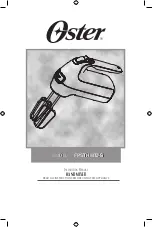
4
THEORY OF OPERATION
The Neptune Polymaster polymer dilution system has three basic subsystems which are the water and
Polymer feed/metering subsystem, the Gatlin distribution head subsystem and the mixing/activation
subsystem.
1.
WATER & POLYMER FEED/METERING SUBSYSTEM
The dilution water is connected to the bulkhead and labeled “Water/Inlet” at the back of the unit.
Dilution water flows through a strainer (to be located outside of the unit), a NEMA 4X solenoid valve,
a flow metering valve, with visual flowmeter, and then into pressure switch assembly. Once through the
flowmeter, dilution water goes directly to the GATLIN distribution head where it is introduced to the
metered neat polymer. A secondary dilution water flowmeter may have been supplied to accommodate
high flow systems, see Post Dilution instructions at end of Manual.
If 40 mesh strainer or finer is not installed in the water line, the Warranty is null and void.
Neat polymer supply is connected to the bulkhead labeled “Polymer Inlet”. A strainer should be
mounted in this line. A polymer feed metering pump draws the neat polymer into the system, through a
strainer, and then injects it into the motor driven GATLIN distribution head where it is introduced to
the dilution water.
2.
GATLIN DISTRIBUTION HEAD
The mechanical distribution head is a patented design which is designed to hydraulically and
mechanically spread the incoming polymer into extremely thin sheets, thus maximizing polymer
surface area exposed to water. By creating thin sheets, the water contacts a larger surface area of
polymer and is more easily and thoroughly wetted. This provides the initial activation.
3.
MIXING
The Polymaster utilizes Komax Static Mixers to provide complete and thorough mixing of the
polymer/water solution. The Komax Static mixer provides three types of mixing actions: Two-by-two
division, Cross-current, and most important, a Back-mixing environment Two-by-two division assures
that the polymer/water solution is in a constant state of separation and prevents the polymers from
recombining into unmanageable product. Cross-current impinges the polymer with the water to fully
disperse the one into the other and eliminate any dead zones or areas that are polymer rich. Finally,
back mixing fully activates the polymer by exposing it to controlled shear in a localized environment.
By using these three mixing actions together, it is possible to achieve a highly uniform mixture of
polymer and water without shear damage, fisheyes, and or angel hairs.
Summary of Contents for PSG Neptune
Page 15: ...10 POLY003 ...
Page 19: ...14 POST DILUTION STATIC MIXER POST DILUTION RATE SET VALVE POST DILUTION FLOW METER POLY004 ...
Page 23: ...18 ...
Page 28: ...23 ...
Page 29: ...24 ...
Page 32: ...27 p Ne u t ne POLYMASTER ...
Page 33: ...28 p Ne u t ne POLYMASTER ...










































